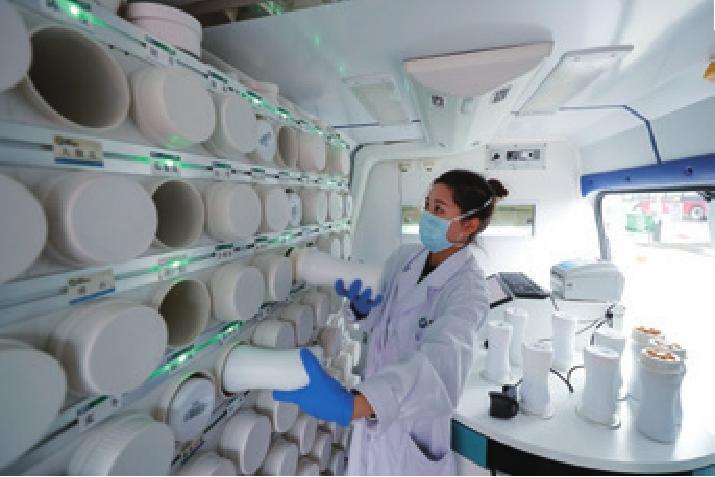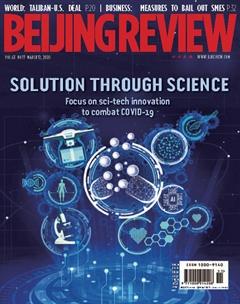HIGH ON TECH
By Ji Jing

At a temporary hospital run by the Zhongnan Hospital of Wuhan University in Wuhan, pervasive use of advanced technology is the new normal. Doctors dont write patients medical records here. Instead, they speak to a computer kitted with sophisticated software, which can transcribe spoken words into a written document at the speed of 400 characters per minute.
Speech recognition technology has not only freed doctors hands and improved the efficiency of writing medical records but also reduced the chance of infection as medical workers dont need to pass on written records among one another.
The two body scanning machines at the hospital are also computerized, making it more convenient, faster and less risky for patients to have checkups. A chest scan takes less than three minutes. Plus the scan system is equipped with technology that allows diagnostic images to be stored and then accessed through multiple machines. The technology transmits electronic images and reports digitally, eliminating the need to manually file, retrieve or transport records, especially X-ray films. Experts can read scanned images and make their diagnosis remotely.
At the entrance of the hospital stands a mobile container. It is actually a mobile biosafety level-3 laboratory, also known as a P3 lab, for isolating and testing virus samples. Operated by a medical team from the Peking Union Medical College Hospital in Beijing, the lab tests patients swabs, blood or other elements to check for the presence of coronavirus.
The first test was done on February 13 and by the next day the lab had produced the results of nearly 100 samples. Currently, it can test 120 to 130 samples every day and give the results the same day. The results are used not only for diagnosis of patients with the novel coronavirus disease, but also for determining whether they can be discharged. A patient has to test negative twice before being discharged.
The surprising thing is that this efficient 1,461-bed hospital is not a “real” hospital. Before the epidemic, it was an urban cultural complex and landmark in Wuhan. Now it is known as the Wuhan Livingroom Hospital. On March 1, it discharged 132 patients, the largest number of patients released on a single day. The youngest was 19 and the oldest 75.
Temporary hospitals made headlines frequently since the epidemic outbreak, especially the Huoshenshan and Leishenshan hospitals, which were assembled in about 10 days. The temporary hospitals are staffed with medical personnel from around the country, who have shown bravery and unity in the face of danger. Footage of them dancing with patients to keep up morale has often been shown on TV and social media. The patients optimism and courage have also been moving.
Although the converted hospitals have been receiving only patients with mild infections, it doesnt mean they have weaker medical treatment capabilities or equipment compared with the large and permanent hospitals. Now these temporary hospitals are catching public attention for their use of hi-tech.
The Jiangxia Hospital in the district with the same name used to be the Dahuashan Sports Center. In its new capacity, the hospital provides primarily traditional Chinese medicine (TCM) treatment. It has a smart and fully automatic TCM pharmacy developed by the Sichuan Neo-Green Pharmaceutical Technology Development Co. The pharmacy is fully computerized and once a prescription is keyed into a computer, medicine can be dispensed at the touch of a button.
Xia Likun, an engineer from the company, said the pharmacy can produce six boxes of medicine according to prescriptions in three to five minutes.
The company has provided two such smart dispensaries for Wuhan. Besides the one at the Jiangxia Hospital, the other serves the Wuhan Jinyintan Hospital and the Wuhan Red Cross Hospital.


